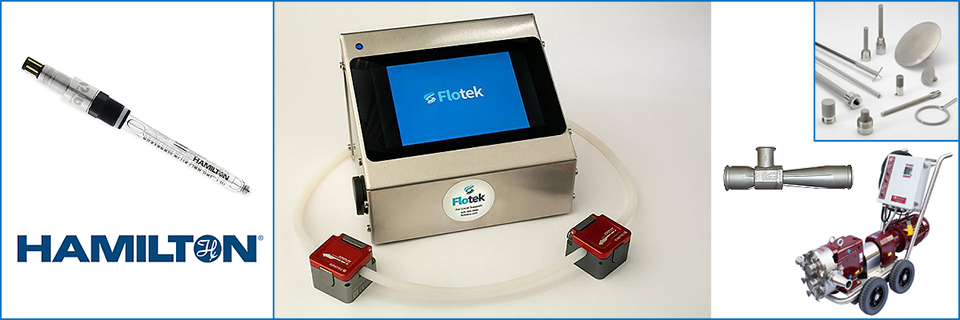Integrate Hamilton Redox/ORP Probes and PID regulation of oxygen addition through Flotek's EnoTek Controller

Oxidation Reduction Potential (ORP) or Redox potential is a dynamic process parameter that tracks with yeast metabolism in wine fermentations. Controlling ORP during fermentation can reduce reductive aromas and lead to more robust ferments. The EnoTek Controller by Flotek offers the ability to simultaneously track and control the redox environment of your fermentation.
ORP is a measurement value that encompasses pH, Dissolved Oxygen (DO), and all chemical half- reactions occurring in a system. ORP probes are better suited to tracking anerobic fermentations than DO or CO2 probes. Yeast consume oxygen so quickly that the DO is effectively zero during fermentation. While CO2 production is correlated with yeast metabolic output, ORP is a more robust process parameter since CO2 output is affected by variables such as temperature, microbes, chemical composition, and tank size/geometry.
The EnoTek is a self-contained Proportional Integral Derivative (PID) closed loop controller. It seamlessly integrates Hamilton sensor(s) with a touch screen where the user can determine an ORP set point. The controller logs the ORP values in real time and can be used to control the redox potential of fermentation through different oxygen management strategies (venturi, pumps, diffuser, etc.)
Physically, the EnoTek Controller is compact, portable, and highly adaptable to tanks and wineries of any scale. The controller is a cost-effective, user friendly interface for controlling and automating bioprocessing equipment. In a modular fashion, the controller can link together process sensors (ORP, pH, DO, Temperature, Density) with winery equipment to control the operation of pumps, valves, and other actuators.
Advantages of Controlling Redox Potential via the EnoTek Controller:
- Higher yeast counts and more viable cells during fermentation.
- More robust fermentations (less incidence of problem ferments).
- Control the production of “reductive” aromas and hydrogen sulfide (H2S).
- Real-time data monitoring and logging of ORP and Temperature.
- Automated PID Control of ORP around a redox setpoint.
- Modular integration of equipment and ability to scale to meet the needs of production.

The EnoTek can communicate with existing winery systems or function as a stand-alone unit. The controller can act as a stand-in for more expensive Process Logic Controllers (PLCs), facilitating the adoption of this technology in smaller family owned and boutique wineries.
EnoTek Controller Technical Specifications:
- Weight: 5.9 lbs or 2.7 kg
- Materials: Stainless Steel Body/Engineered Plastic.
- Linux Based Operating System.
- Highly Adaptable Interface: WiFi accessible (On/Off, Password Protected), 2x USB (2.0), HDMI (for monitors), Analog (4-20mA), Digital (Modbus), and Ethernet (RJ45).
- Scalable: Base model comes with 4 connections and is expandable in cassettes of 4 (up to 50).
- M12 5-pole Process Connections.
- User Interface/Operational Options: Touch screen or direct monitor connection (via HDMI), USB for mouse and keyboard connection, or wireless connection to external touchscreen or tablet.
- Internet Remote Access (Password Protected).
- Voltage 220/120V and Fuse Protected.

